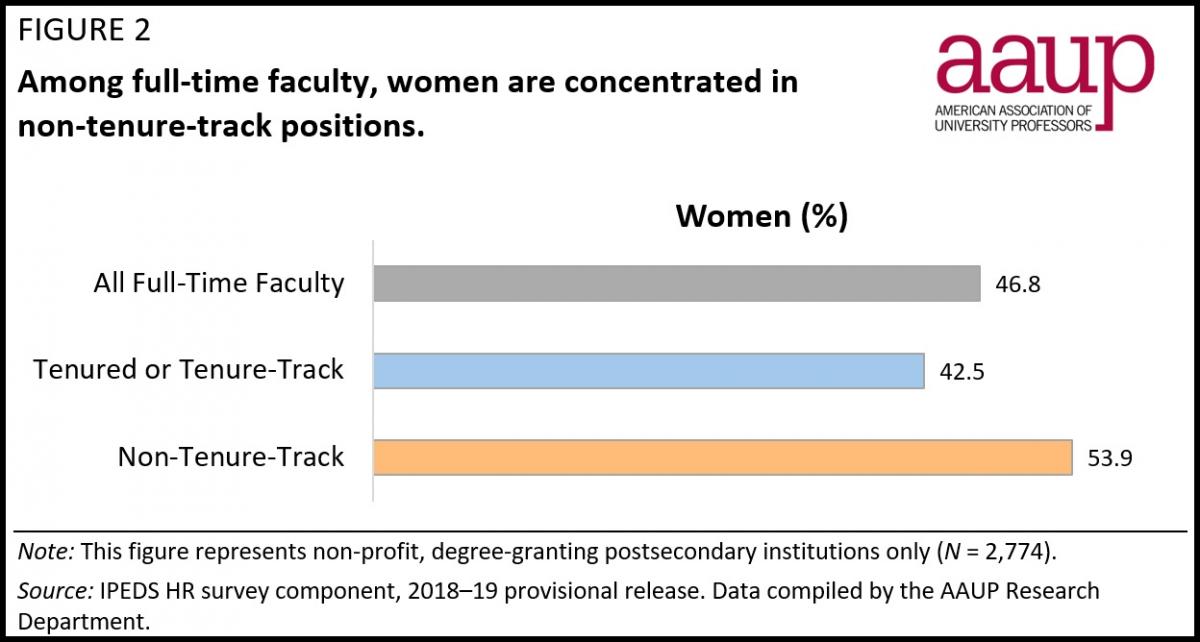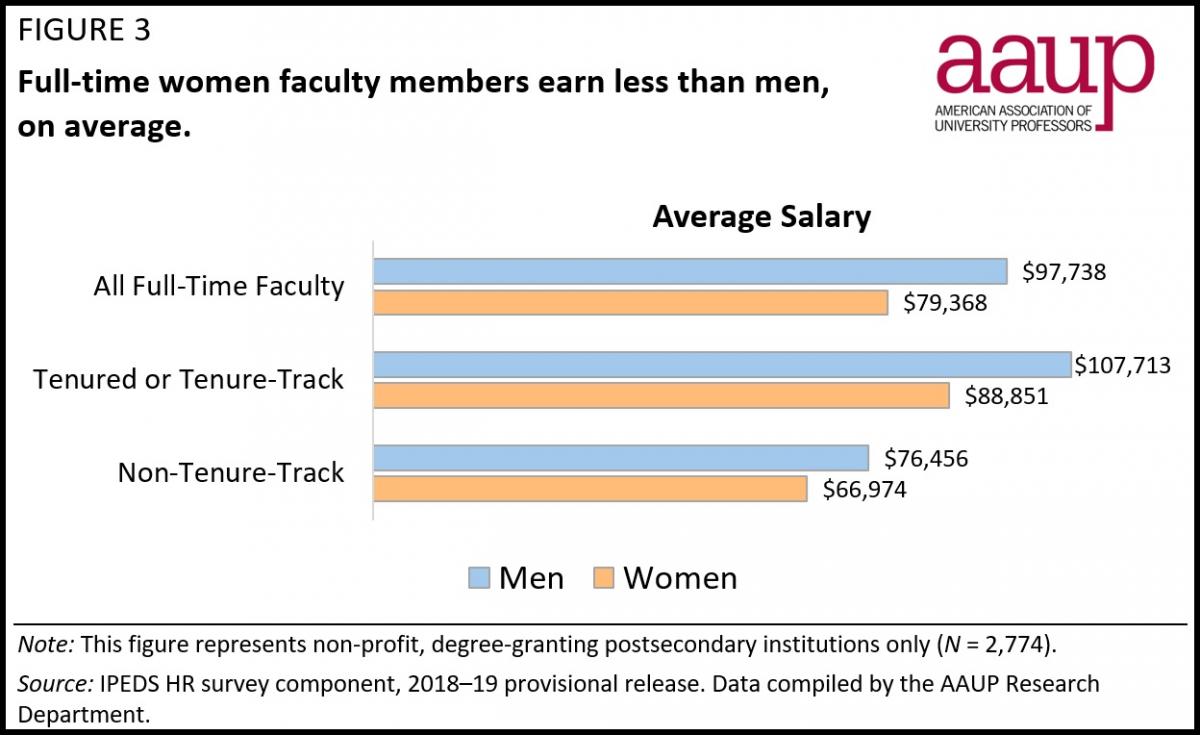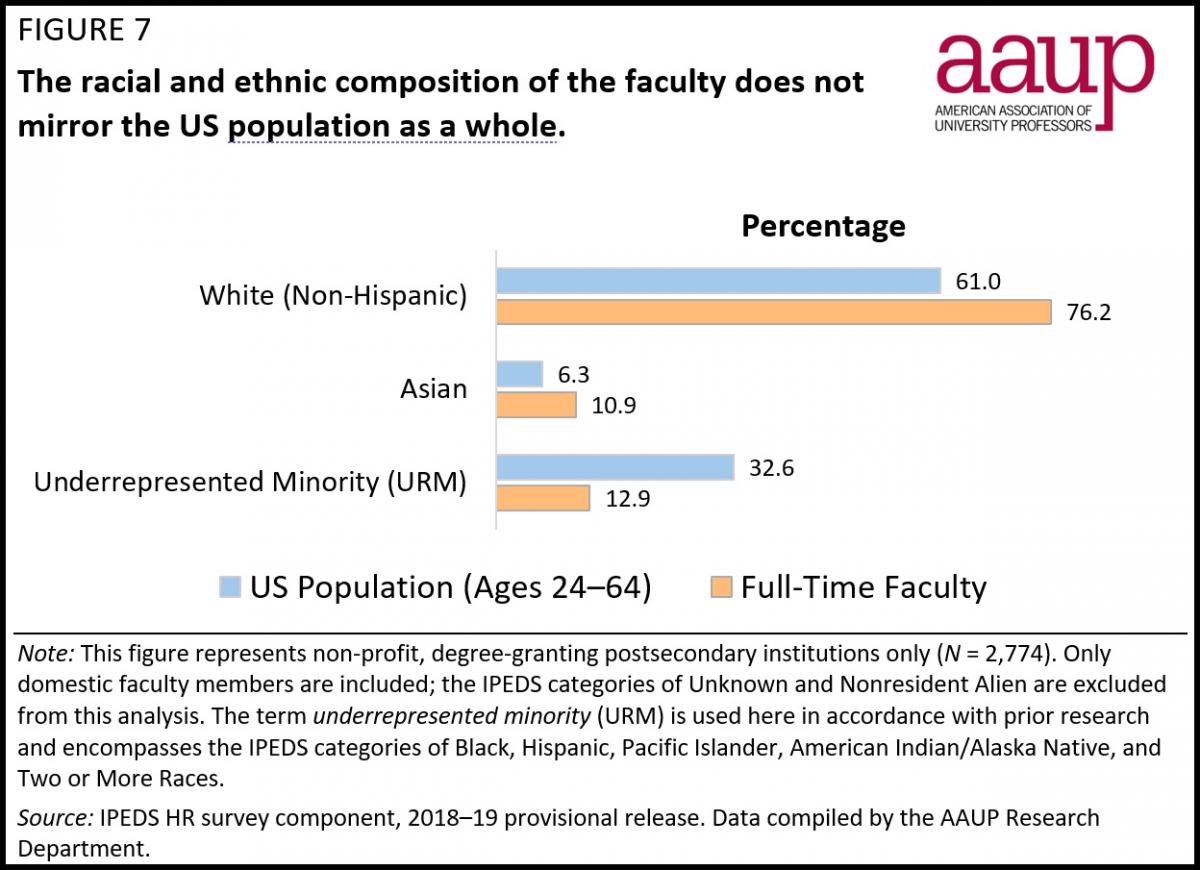An in-depth look at recent US Department of Education data on the makeup and salaries of full-time faculty members in higher education.
This data snapshot provides an updated demographic profile of full-time faculty by academic rank and institution type, highlighting disparities among women and people of color in an effort to analyze demographic breakdowns and salary differences. The snapshot draws upon data from the provisional release of the Fall 2018 Integrated Postsecondary Education Data System (IPEDS) Human Resources survey component and from foundational research by Martin Finkelstein, Jack Schuster, and Valerie Conley to understand the demographic breakdown of the faculty and the disparities that persist. Throughout the report, we have followed the terminology used by IPEDS for ease of data comparison.
This analysis shows that the proportion of women faculty members in academia is increasing, but that disparities remain.
- Even though women now account for 47 percent of full-time faculty members (compared with only 32 percent in fall 1991), they are overrepresented in non-tenure-track positions (see figure 2).
- Further disparities are apparent in the representation of women among full-time tenured or tenure-track faculty members within higher academic ranks, as only 32.5 percent of full professors are women.
- Salaries for full-time women faculty members are approximately 81.2 percent of men’s, with women earning $79,368 and men earning $97,738, on average (see figure 3).
A comparison of the proportions of full-time faculty members in each IPEDS race and ethnicity category with the broader US adult population (ages 24–64) shows that the composition of the faculty does not mirror the US population as a whole.
- Underrepresented minority (URM) individuals—those falling in IPEDS race and ethnicity categories other than white or Asian—make up only 12.9 percent of full-time faculty members across the country, despite making up 32.6 percent of the US population aged twenty-four to sixty-four (see figure 7).
- Among full-time URM faculty members, underrepresentation is particularly pronounced among the Hispanic or Latino and Black or African American categories.
The AAUP’s analysis confirms that women faculty members continue to face unique challenges in academia with respect to employment, advancement, salary, and job security, and that higher education is by no means immune from systemic racism. The pay and opportunity gaps identified in this data snapshot are the result of many factors beyond gender, race, and ethnicity, and closing them will require innovative and sustained efforts.
Download the complete data snapshot.




